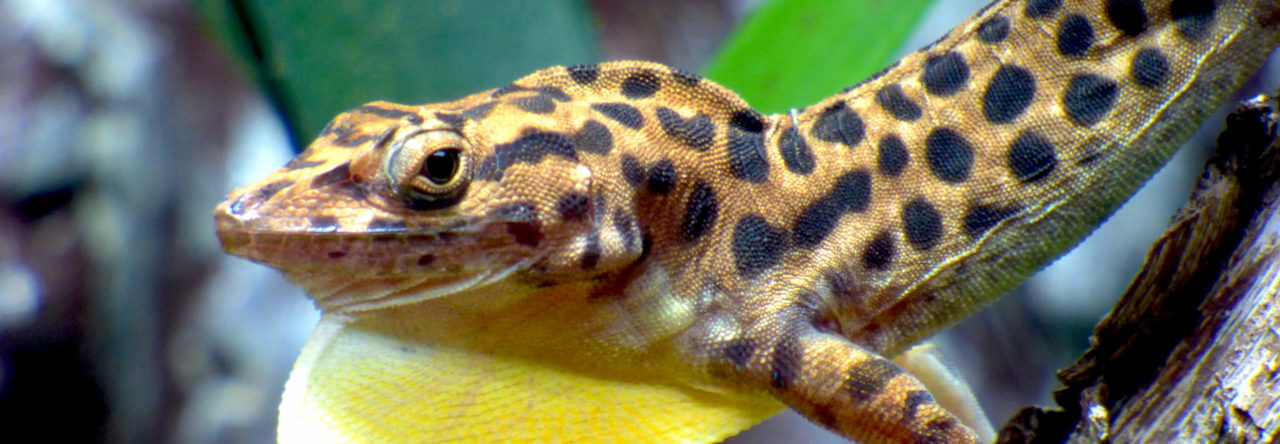Several days ago, I challenged Anole Annals readers to identify the three problems with this stamp, issued by Grenada and other nearby islands in their “Reptiles of the Caribbean” series… The answers were creative and insightful, and identified some issues that I had missed. And readers even picked up on one problem I thought would elude them. So what are the problems to which I referred?
The photograph is of a male Anolis grahami.
Problem #1: A. grahami is from Jamaica. Why is it on a stamp from Grenada? This was the gimme.
Problem #2: This individual actually was from Bermuda, where A. grahami was introduced in 1905. Bermuda, of course, is not in the Caribbean. This was the tough one that no one realized.
Problem #3: This is my photograph, used without my permission! Don’t believe me? Here’s the unabridged version, which appears on Todd Jackman’s Anolis webpage, which Todd speculates, probably correctly, is where the Grenadians got it:
I can assure you that I never granted permission for its use, and until I stumbled across it on the internet, I was unaware that it had been planted on a $6 stamp (royalties—ka-ching!). Does anyone know a good intellectual property rights lawyer with offices in the Lesser Antilles?
It turns out, however, that kerfuffles with anoles and postage stamps are not unheard of. Here’s another, brought to my attention by Uwe Bartelt, rumored to be the world’s leading anole philatelist.
















